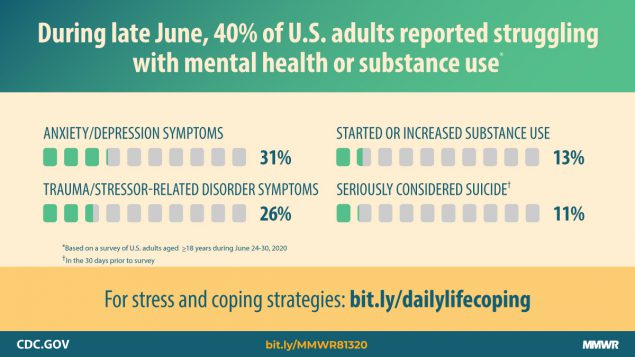Are You Paying Attention To Employee Stress?
Estimated reading time: 5 minutes
As the pandemic continues, many businesses are trying to get employees back to some semblance of normal.
Most employees are anxious to get back to work. However, that anxiety extends to the workplace.
As employers, we are required to balance the business’s needs while supporting the employees who get it done.
A CDC report shows that 40% of adults reported struggling with stress, mental health, or substance abuse.

These kinds of statistics will naturally overflow into the work environment.
Whether your employees continue to work remotely or have returned to the office, you can expect many of them to be experiencing stress-related issues.
Employees are worried about their families, they are worried about getting sick, and they are worried about keeping their jobs and paying the bills. These are not minor stressors and should be acknowledged.
Employees may show symptoms of stress by being cranky, angry, nervous, sad, unmotivated, and unproductive.
Now is the time to focus on helping employees rather than correcting undesirable behaviors.
10 Things You Can Do To Support Employee Stress
1. Talk About It
When we talk about issues, we are able to release stress.
Create a forum for employees to talk about what they are experiencing and encourage them to share best practices for juggling their many responsibilities and pandemic-related concerns.
For instance, designate a time at work for employees to get together and talk. Make sure you follow the social distancing protocol to keep workers safe.
Assign someone to be the facilitator and to keep the conversation focused on idea-sharing.
Don’t allow negativity to creep into the conversation. Keep it focused.
2. Offer Support
Hopefully, your business has a resource for mental health.
Make sure employees are aware of mental health services and how to access them.
Use confidentiality practices to ensure employee information is protected.
3. Bring In Experts
Hire an expert to talk to staff about stress and to provide tools to deal with symptoms.
Host a lunch and learn and have an expert give practical tips for acknowledging and managing personal stress.
For example, exercise, sufficient sleep, and a healthy diet are all practical things employees can do to manage the stress in their lives.
4. Share Covid Information
Use the CDC as a guide and share helpful information about the pandemic with employees.
Don’t only show the number of cases but also share risk factors, the status of pending treatments, vaccines, and tips to keep employees and their families safe.
5. Protect High-Risk Population
You may be working on getting all employees back in the office; however, it is important to protect those in your employee population who may be at high risk.

Make exceptions for this vulnerable group and allow them to continue to work remotely.
Communicate job requirements for those working at home to ensure productivity aligns with those who work in the office.
6. Keep The Workplace Safe
I’m sure by now you are aware of the CDC guidelines for workplace safety.
These include daily temperature checks, improving building ventilation, requiring employees to wear masks in public areas, and workplace social distancing.
Ensure employees are aware of updated sanitation protocol and what you are doing to keep the office free from contaminants.
7. Encourage Sick Workers To Stay Home
It should go without saying, but it is important that employees feel comfortable calling in sick if they don’t feel well.
Encourage employees to stay home if they are experiencing COVID-19 symptoms and to follow CDC guidelines.
8. Require Customers And Vendors To Do The Same
When you are doing everything you can to keep your business safe, make sure you expand those expectations to customers and vendors.
Communicate expectations for entering the building by vendors and customers.
Contact vendors and let them know what your safety precautions are and that they are required to follow business protocol.
If applicable, take temperatures and do an initial screening before allowing anyone in the building.
9. Stagger Work Schedules
If practical, encourage employees to stagger work schedules so that the entire staff is not in the building simultaneously.
For instance, have a group of employees work Monday, Wednesday, and Friday and rotate with another group of employees for Tuesday and Thursday.
Ensure employees working from home are available for work meetings and Zoom calls, so they stay in touch.
10. Provide necessary PPE
No one really likes wearing masks and gloves, but most agree that it is required to manage the virus’s spread.
Provide the necessary PPE for employees and provide face masks, protective gloves, and gowns (if necessary) to ensure they feel protected while in the office.
2020: The Year Of Stress
This year has been stressful for everyone. Businesses are trying to stay afloat – creating major stress for owners. Employees are feeling the stress of juggling family and work and dodging the virus.
As you slowly get your office back up and running, make sure you stop and consider the enormous stress your employees are experiencing. Let employees know you care by offering support and providing a work environment that is safe and welcoming.
What are you doing to help employees with stress?






